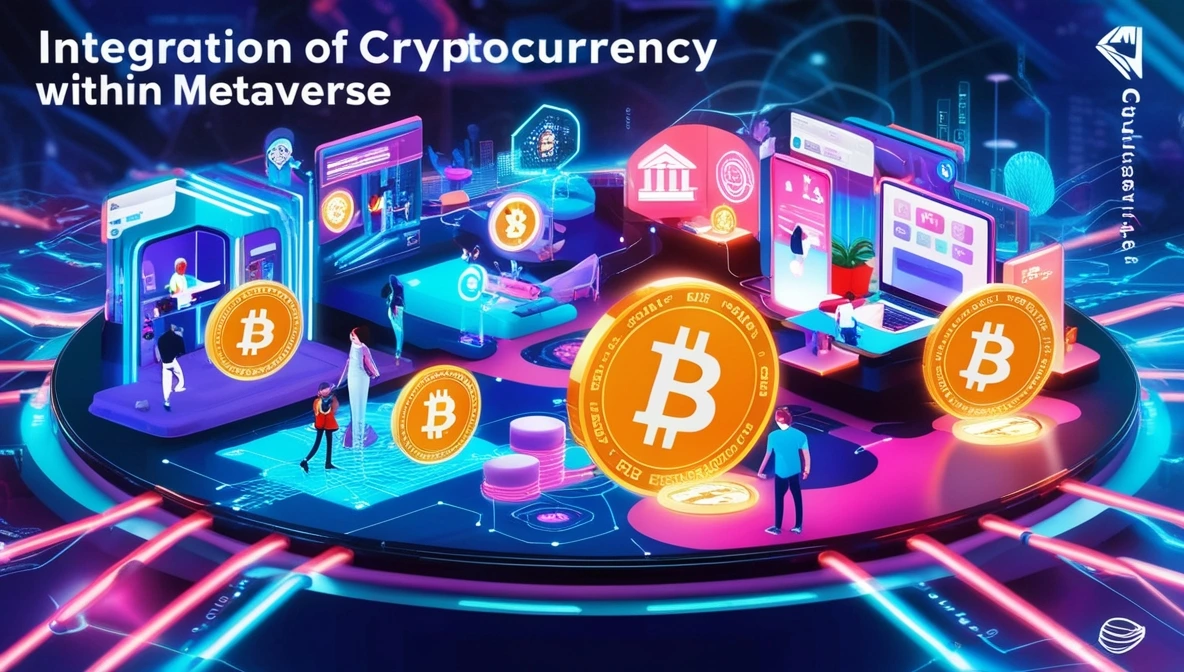Metaverse and Cryptocurrency: Virtual Economies in 2024
The metaverse is rapidly evolving, merging the physical and digital worlds into immersive virtual environments. As we head into 2024, the integration of cryptocurrency within the metaverse is set to redefine how virtual economies operate. With innovations like virtual real estate, digital goods, and blockchain-powered transactions, both the metaverse and cryptocurrency are creating new opportunities for users, investors, and businesses alike.
What is the Metaverse?
The metaverse refers to a collective virtual space that is accessible via the internet, allowing users to interact with a computer-generated environment and other users in real time. Unlike traditional video games or social media platforms, the metaverse aims to create a persistent, shared space where users can socialize, work, play, and even trade assets.
Cryptocurrency is at the heart of this virtual world, acting as the financial backbone for transactions, purchases, and ownership of digital goods within these spaces. The metaverse and cryptocurrency are intertwined, with blockchain providing the security, transparency, and ownership verification necessary to operate in this new economic environment.
Cryptocurrency in the Metaverse: The Foundation of Virtual Economies
As the metaverse grows, cryptocurrencies have emerged as the primary medium of exchange. From buying virtual real estate to purchasing digital goods like avatars and skins, cryptocurrencies allow users to seamlessly trade and interact within the metaverse.
1. Virtual Real Estate
In the metaverse, users can purchase virtual plots of land using cryptocurrency. These plots can be developed, rented, or sold, similar to physical real estate in the real world. Platforms like Decentraland and The Sandbox use blockchain technology to verify ownership and facilitate real estate transactions using their native cryptocurrencies, such as MANA and SAND.
2. Digital Goods and NFTs
Non-fungible tokens (NFTs) have become a critical part of the metaverse economy. NFTs represent ownership of unique digital items like art, collectibles, and virtual fashion. Users can buy, sell, and trade NFTs using cryptocurrencies. Since NFTs are blockchain-based, they offer transparency and security, making them ideal for verifying ownership within the metaverse.
3. Play-to-Earn (P2E) Games
P2E games have become a popular way for users to earn cryptocurrency by playing games in the metaverse. Games like Axie Infinity and Star Atlas reward players with in-game tokens that can be converted into real-world currency, offering a new revenue stream for gamers and content creators.
Benefits of Cryptocurrency in the Metaverse
Cryptocurrency brings several key benefits to the metaverse, which are driving the growth of virtual economies:
- Decentralization: Cryptocurrencies operate on decentralized networks, meaning no single authority controls transactions. This gives users more control and flexibility when engaging in the metaverse economy.
- Transparency and Security: Blockchain technology ensures that all transactions are transparent and secure, reducing the risk of fraud. Every trade, purchase, or ownership transfer is recorded on a distributed ledger, offering immutable proof of ownership.
- Global Access: Cryptocurrency allows for seamless cross-border transactions. Anyone with internet access can participate in the metaverse economy, regardless of geographical location or traditional banking restrictions.
- True Ownership: In the metaverse, users can truly own digital assets like land, NFTs, or in-game items. Blockchain ensures that these assets cannot be duplicated or altered, creating real value for virtual goods.
Challenges Facing Virtual Economies in 2024
While the metaverse and cryptocurrency offer exciting opportunities, there are still challenges to overcome:
- Scalability: As more users engage with the metaverse, current blockchain networks may struggle to handle the volume of transactions, leading to higher fees and slower processing times.
- Regulation: The regulatory landscape for cryptocurrencies and virtual economies remains uncertain. Governments are exploring ways to regulate digital assets, which could impact how virtual economies function in the future.
- Adoption: Mainstream adoption of the metaverse and cryptocurrency is still in its early stages. Many users are unfamiliar with these technologies, and user-friendly solutions will be critical for widespread acceptance.
- Security Risks: As virtual economies grow, they may become more attractive to hackers. Ensuring robust cybersecurity measures are in place will be vital for protecting users’ digital assets and data.
The Future of Virtual Economies
As we move into 2024, the metaverse and cryptocurrency are expected to grow even further. Key trends that will shape the future of virtual economies include:
- Increased corporate involvement: Major brands and corporations are already exploring how to engage with users in the metaverse. From virtual storefronts to branded NFTs, businesses are finding new ways to connect with consumers in virtual spaces.
- Interoperability: A major goal for the metaverse is creating interconnected virtual worlds where users can seamlessly move between platforms, taking their digital assets and cryptocurrencies with them. Blockchain technology will play a key role in enabling this interoperability.
- Sustainability: With growing concerns about the environmental impact of cryptocurrencies, 2024 will likely see the rise of more energy-efficient blockchain solutions, such as Proof of Stake (PoS) and Layer-2 technologies, which reduce energy consumption and transaction fees.
- AI and Automation: Artificial intelligence (AI) and automation will continue to enhance the metaverse experience, from personalized virtual environments to AI-driven economic models that manage supply and demand within virtual economies.
Conclusion
The integration of cryptocurrency within the metaverse is revolutionizing how virtual economies function. As users explore new ways to interact, trade, and own assets in digital spaces, the role of blockchain and cryptocurrency will become even more prominent in shaping the future of these economies. From virtual real estate to play-to-earn games and NFTs, the possibilities for growth in 2024 are immense.
As the metaverse evolves, so too will the potential for virtual economies to become a significant part of the global financial system. Understanding how to navigate this new digital frontier and leveraging the power of cryptocurrency will be key for individuals and businesses looking to thrive in the metaverse.
